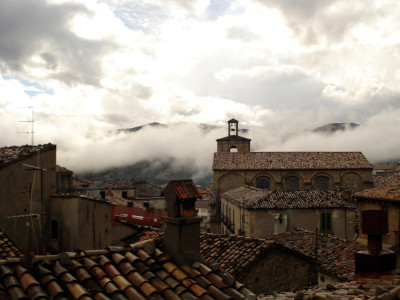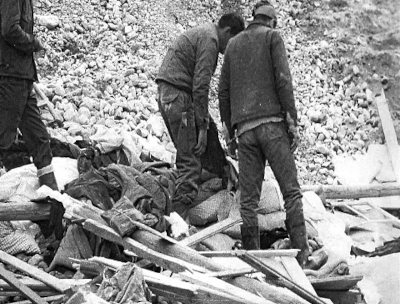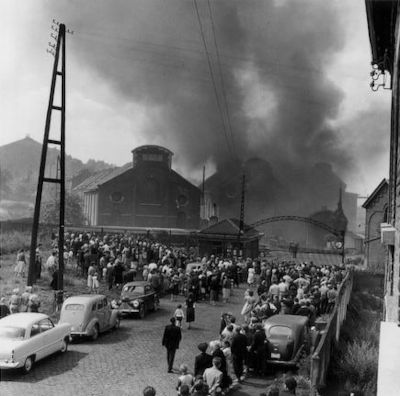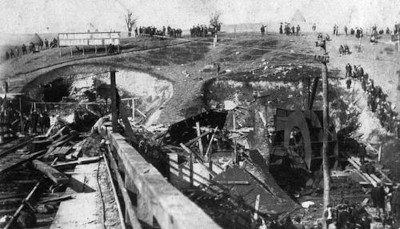This is the first chapter of the essay of Dr. Salvatore Inglese: "The restless alliance between psychopathology and anthropology (memories and reflections of an experience on the field)" drawn of the "I fogli di Oriss", N 1, on 1993
The first impact, the first vision reported from the persons who worked there already and which would share with me this professional experience, was that there wouldn't be much work: few the patients, common the histories. Everything would have been covered, during the winter, with a layer of snow, initially light and thin, after hard like white concrete.
The city seemed to have anything to say to one coming from the external world. While fleeting signs announced clearly that I had crossed an invisible border, but certain, between what remains outside and what, in this territory silent lay, contained by invisibles restrains.
Later, much more lately, a collective, merciless and firm work of deletion would come in evidence. But what everybody tries so hard, to delete?
Later, much more lately, I fortuitously learned, by reading a historical article of commemoration of the tragedy of Mattmark, that seven victims came from this territory. (In August of 1965, a glacier of the Swiss Alps is reversed on the building sites prepared for the construction of the dam Mattmark, making a massacre of men.)
Involved with emotion in its tragic destiny all the country took part in the anguish which didn't spared nobody. The authorities, the families, the clergy and the politicians activated a bridge for the mourning and the solidarity, in front of the most important tragedy of the emigration in foreign country, until this moment, that this community had to face.
In the time when I worked, wrote and marked research there (1982-1990) nobody referred me about this event, whereas all knew my specific interest for the migratory events. I was maintained at side of all this. Even after years of permanence in the territory, after having known hundreds of cases and emergent events of the historical background of the emigration of mass.
Immediately I justified such a behaviour believing to recognize a manner of excluding me, because external member of this intimate sphere, which crystallizes inside a community struck by a collective tragedy. Then I reached the conviction that this radical strategy of isolation and repression of the drama was mostly addressed to the members belonging of right to the community. The intolerance of the event, therefore, wasn't to go up on the surface of the collective consciousness, because it still didn't know how to file the problem of the emigration like choice of survival.
Besides, at a distance of time, it couldn't be proposed to the attention of the younger generations the history of this event, still dissuasive and threatening, able to involve in the feeling of bad luck, not only the destiny of an individual or a family, but that of a whole population.
Salvatore Inglese
Doctor, psychiatrist and psychotherapist. He achieved his own vocational training spending periods of study and research in Italy and in the foreign country. Since years he studies the psychic illness of the populations of migrants in Italy, France, Switzerland and Canada, lend particular attention to the existing relations between psychopathology and cultures of origin of the patients (ethno psychiatry). On these topics he collaborates with "Societa Italiana di Antropologia Medica", " Oriss: Organizzazione Interdisciplinare Sviluppo e Salute " and the history laboratory Daedalus. Author of many scientific publications in Italian, French and English, affiliated at eminent national and international scientific companies, he makes part of the Council of the Secretariat of the Calabrian section of the Italian society of Psychiatry. Currently he works near the service of the mental health of Catanzaro; as director of "Transcultural and community psychiatry - research methodology".
Links
This is a section of the site dedicated to the Mediterranean Architecture and that, going from the Mezquita de Cordoba to the Tiberius's Villa Iovis in Capri, from the Adalberto Libera's Villa Malaparte always in Capri until the Francesco Venezia's Gibellina Museum, from the Le Corbusier's Ronchamp Chapel to the Abbazia Florens of Gioacchino da Fiore and Luca Campano through the undergrounds of Naples, the underground architecture of the Greek Roman caverns exposed to the XVII Triennale of Milan, the ages, the cultural migrations, the Urbanism and Etno-Psychiatry, sometimes the losses, sometimes the contaminations, through various values and the religions, the aesthetic valences, with the contribution of personal written and of others Authors, of photography's, designs and other types of iconographic representations, 3d rendering, cad, videos, wants indicate a reflection course on this argument.



